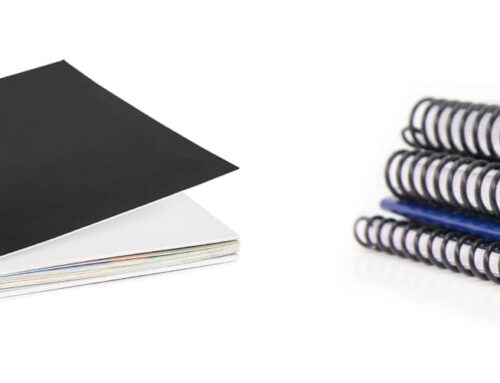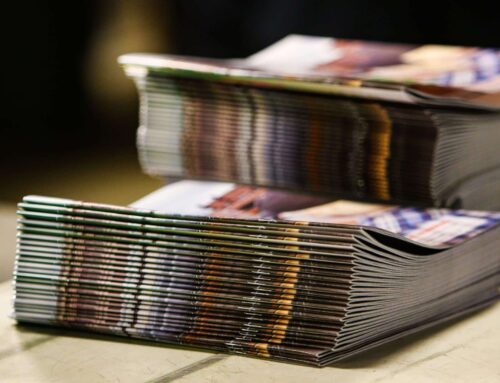Ask any true book lover, and they’ll tell you: there’s something magical about cracking open a fresh, new book and hearing that first, crisp snap of the spine. It’s a tiny moment of joy, a promise that you’re about to dive into a world of stories, ideas, or memories.
So, what makes a book stand the test of time?
Generally, it is the binding.
Book binding is one of those behind-the-scenes details most people never think about. However, it is what turns a stack of printed pages into something worth holding onto.
At Digiprint, we know a thing or two about binding. Our Reno print shop has helped countless businesses, authors, and creative minds turn their ideas into polished, professional products. In this post, we’ll guide you through what book binding is and when you should use it.
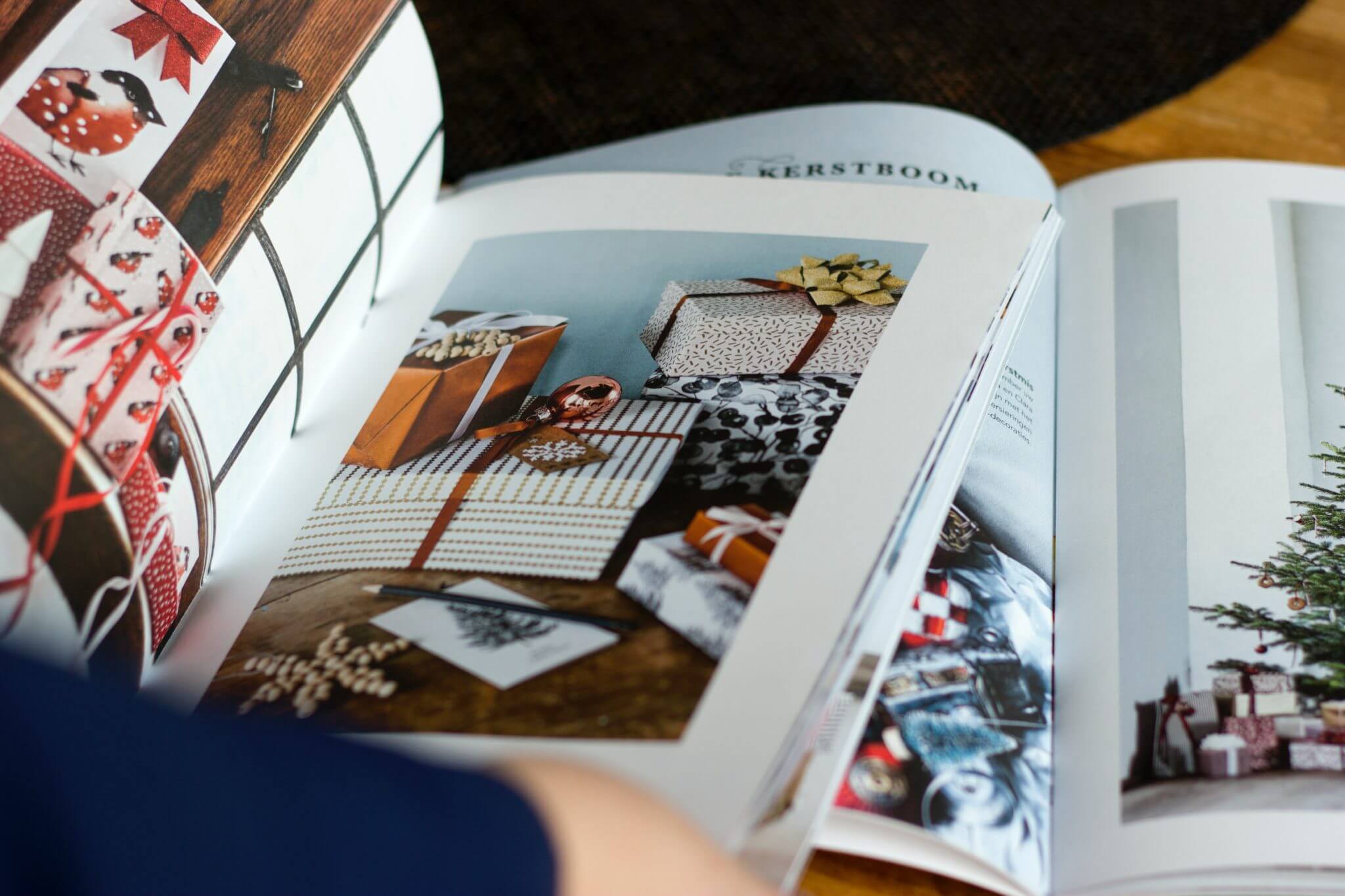
Table of Content
Why Do People Use Book Binding?
Common Types of Book Binding
How Does Book Binding Work?
What is Book Binding?
Book binding is physically assembling a book from an ordered stack of paper sheets. It involves attaching the pages along one edge (usually the book spine) and then covering them with a protective material, like cloth, leather, or cardstock.
There are plenty of ways to bind a book (more on this later). But no matter the method, the idea is the same: to keep your pages neat, organized, and easy to read.
Why Do People Use Book Binding?
The purpose of book binding goes beyond just holding pages in place. It’s about creating a finished product that looks great, feels sturdy, and can be used again and again.
1) Readability and Usability
Loose pages are a nightmare to read. Binding keeps everything together in one neat, readable package. Whether it’s a cookbook, your favorite novel, or a training manual, a properly bound book makes usage easier.
2) Durability and Protection
Books are meant to last, potentially a lifetime. A good type of book binding keeps your pages secure and protects them from damage, even if the book is flipped through hundreds of times.
3) Professional Appearance
A bound document looks more polished and put-together. If you’re meeting with clients, sending investor reports, or handing in a portfolio, the right binding gives your project instant credibility and a “serious business” vibe.
4) Educational Purposes
Students, teachers, and anyone working with educational materials will know that a bound book or workbook is much more manageable than a loose stack of notes. Textbooks, research papers, and study guides make more sense when they’re neatly bound together. Additionally, they’re easier to carry around.
Want to see how binding can elevate your brand? Check out our post on the importance of binding in marketing materials for more insights.
Common Types of Book Binding
Different book binding methods complement different projects. Below, we’ll walk you through the most popular options. If you want to explore the full variety of binding types in greater detail, don’t miss our in-depth guide.
1) Perfect Binding
Perfect binding uses adhesive to glue pages to a flexible book spine. You’ll often see this method in softcover books, where the pages are stacked, glued, and then trimmed to form a clean, “perfect” edge. You can also customize the spine with printed text, graphics, or branding to make it more identifiable on a shelf.
Pros:
- Professional appearance
- Ideal for thicker books
- Can accommodate many pages
Cons:
- Doesn’t lie flat
- Less durable compared to sewn bindings
Ideal Use Cases: Paperback books, annual reports, and manuals.
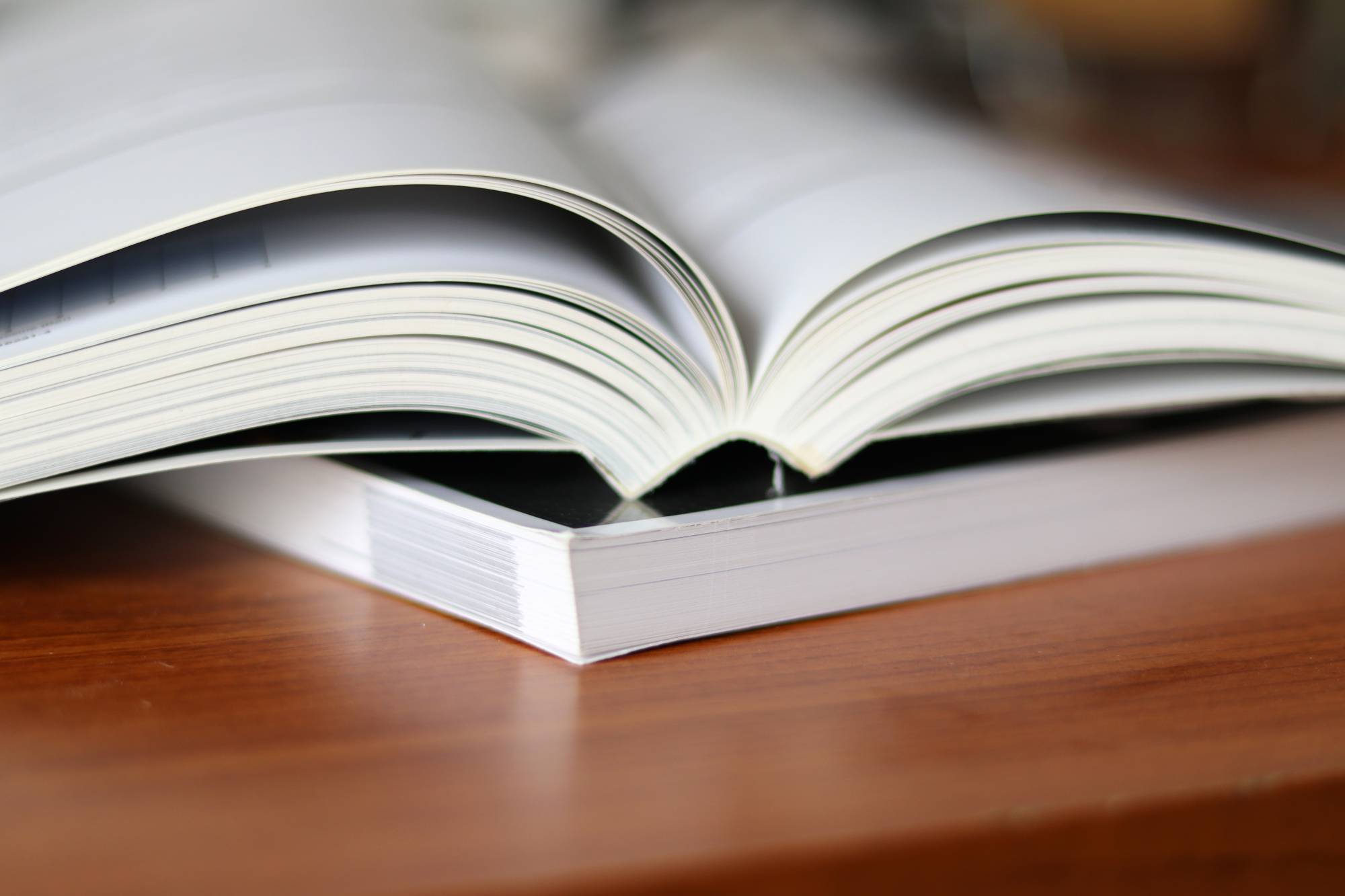
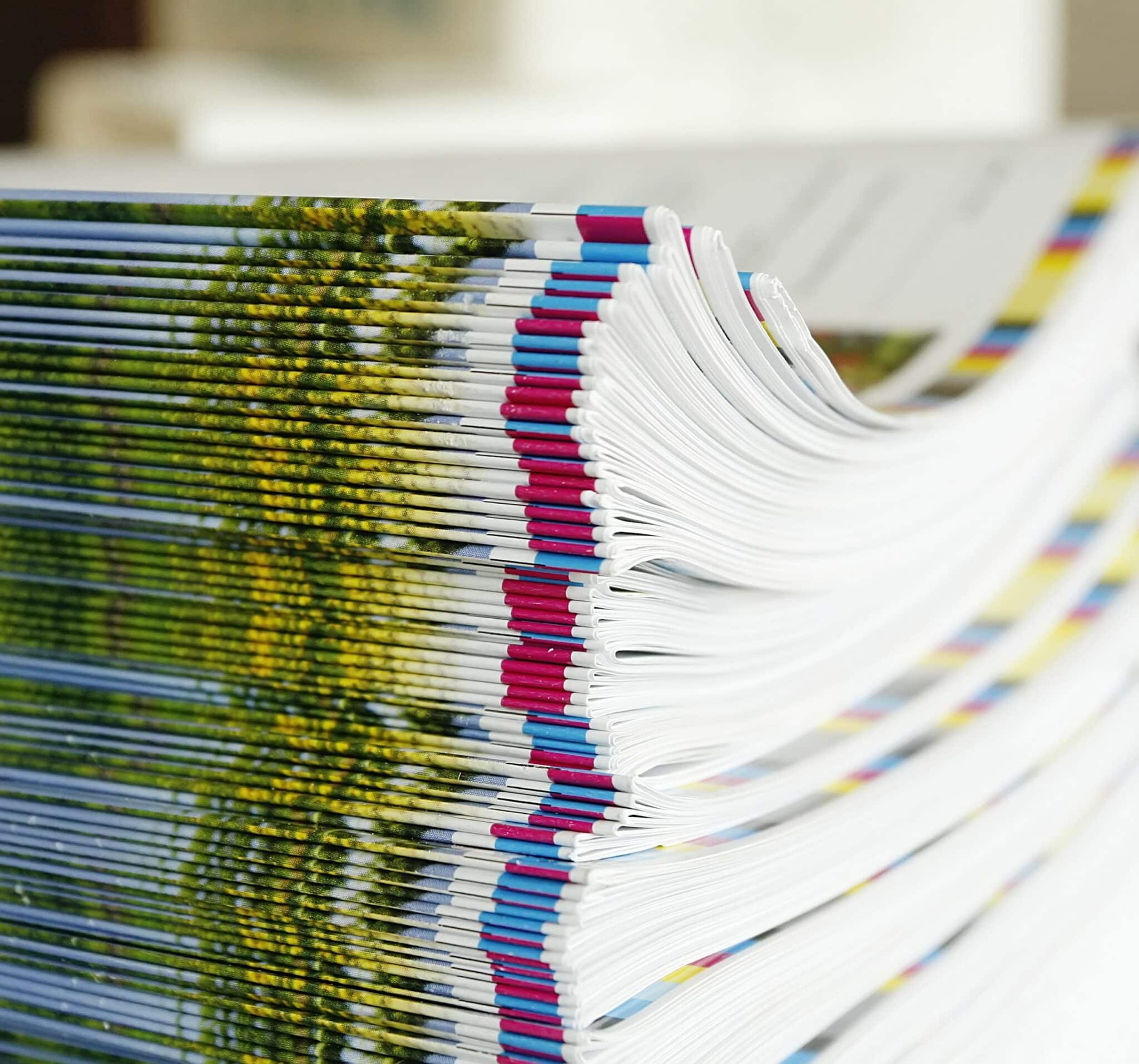
2) Saddle-Stitch Binding
Saddle-stitch binding is a simple, cost-effective method that uses staples through the spine to hold pages together. It’s preferred for smaller booklets and magazines. The best page count of saddle-stitch binding is typically under 64.
Pros:
- Quick and affordable
- Lays flat when open
- Perfect for shorter documents
Cons:
- Limited page count
- Not as durable as other methods
Ideal Use Cases: Magazines, booklets, event programs, and newsletters.
3) Spiral Binding
In spiral binding, a plastic or metal coil is run through pre-punched holes along one edge of the stack. One of the most affordable types of book binding, it’s a great choice for projects that need to lie flat or fold back completely.
Pros:
- Lays flat or folds back 360 degrees
- Durable for everyday use
- Easy to add or remove pages
Cons:
- Less formal appearance
- Coils can bend or get damaged.
Ideal Use Cases: Notebooks, workbooks, manuals, and calendars.
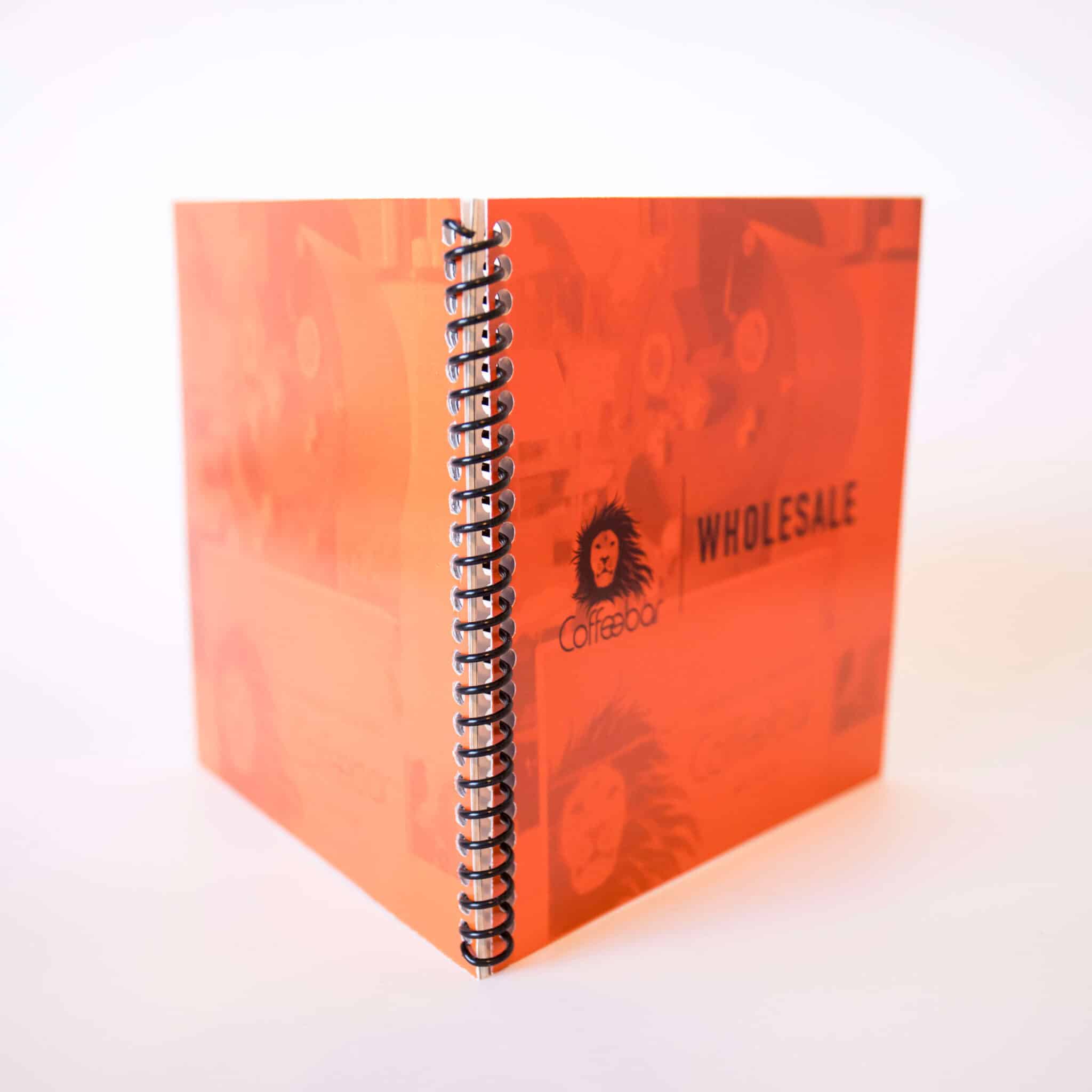
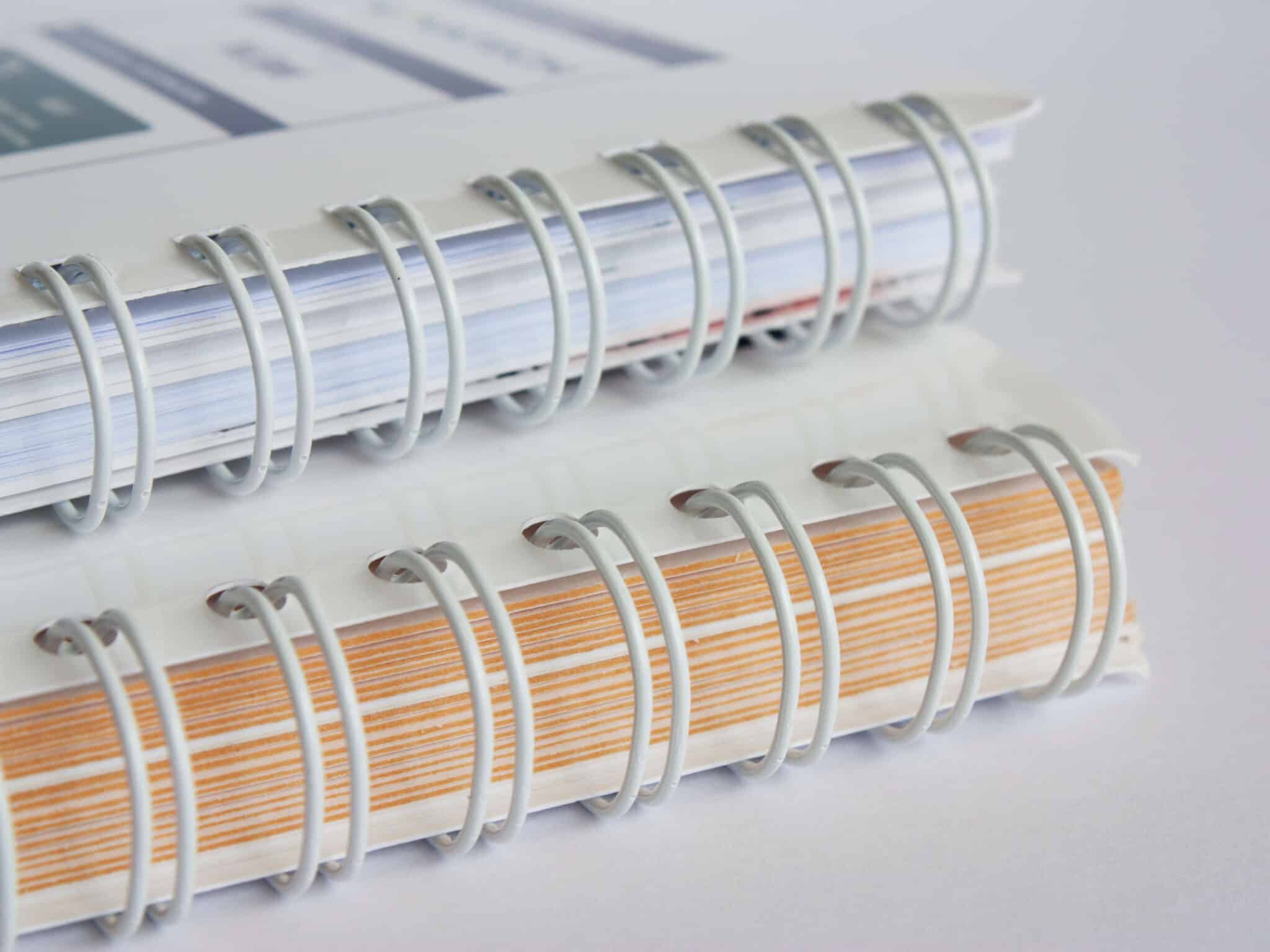
4) Wire-O-Binding
Wire-O binding is a step up from traditional spiral binding. Unlike a single spiral coil, Wire-O uses a double-looped wire (often made of metal) that is threaded through pre-punched holes along the edge of the pages.
Pros:
- Lays flat and folds back
- Professional and polished look
- Sturdy double-loop wire
Cons:
- Wires can bend if not handled carefully
- Slightly more expensive than spiral binding
Ideal Use Cases: Calendars, planners, workbooks, and corporate presentations.
5) Comb Binding
With comb binding, you’ll see a plastic spine with teeth used to lock the pages in place. One of the best things about this type of binding is that you can easily open the comb spine to add or remove pages.
Pros:
- Affordable and reusable
- Customizable with different colors
- Pages can be easily added or removed
Cons:
- Not the most durable option
- Looks less polished than other methods
Ideal Use Cases: Training manuals, reports, or reference guides.
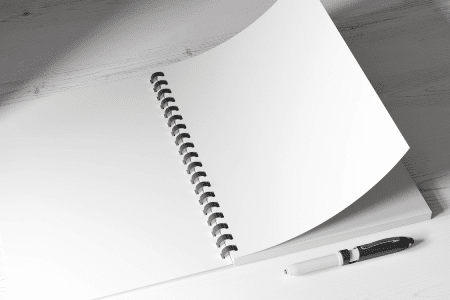

6) Hardcover (Case Binding)
Most people choose hardcover binding when they’re looking to go all out. Here, the pages are sewn or glued together and enclosed in a rigid, protective cover. Case binding is typically used for most high-end novels, textbooks, and keepsakes like wedding albums.
Pros:
- Extremely durable
- Premium, high-end appearance
- Protects pages from wear and tear
Cons:
- More expensive than other methods
- Takes longer to produce
Ideal Use Cases: Hardcover books, professional portfolios, keepsake books, and photo albums.
How Does Book Binding Work?
At its core, book binding is about turning a loose stack of printed pages into a single, durable book that’s easy to read and handle. Here’s how the book binding process works in a nutshell.
1) Preparing the Pages
The process starts with printed sheets. These pages are carefully stacked in the correct order, so everything lines up perfectly. In some methods, like saddle stitching or spiral binding, the pages may need to be folded or punched with holes first.
2) Aligning and Trimming
Once the pages are stacked, they’re lined up to create a clean, even edge. Depending on the binding method, they may be trimmed to sharpen the edges.
3) Binding the Pages Together
The way your pages are bound will vary based on the method you choose. For instance, in perfect binding, the pages are glued together along the spine with a strong adhesive, then covered with a soft cover. On the other hand, if you go with spiral binding, a coil (plastic or metal) is threaded through holes punched along one edge.
4) Adding the Book Cover
Finally, it’s time for the finishing touch: the cover material. It is what gives your book its look and feel.
- For spiral or comb binding, you usually get a sturdy plastic or laminated cover for durability.
- For perfect binding, it’s a flexible, soft cover that wraps around the spine.
- For hardcover books, it’s a rigid, durable cover that protects your pages and gives a premium feel.
Now, book binding is not your average DIY project. Sure, you can try stapling some pages together at home, but professional book binding requires specialized equipment and know-how. You’re better off leaving it to professional printing services in Reno, especially if you want something that looks polished, lasts for years, and actually stays together.
Choose Digiprint for Quality Book Binding
If you take nothing else from this post, remember: book binding turns a pile of paper into something worth keeping. It protects your content, delivers a shot of professionalism, and gives your ideas the structure they deserve.
At Digiprint, our expert team and state-of-the-art binding services can help you fine-tune your projects to perfection. We’re quick, dependable, and committed to impress. Contact us today, and let’s talk about what we can do for your project!

